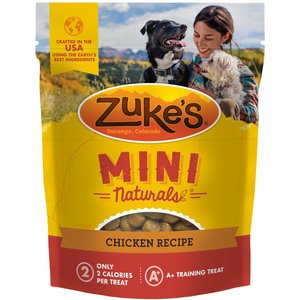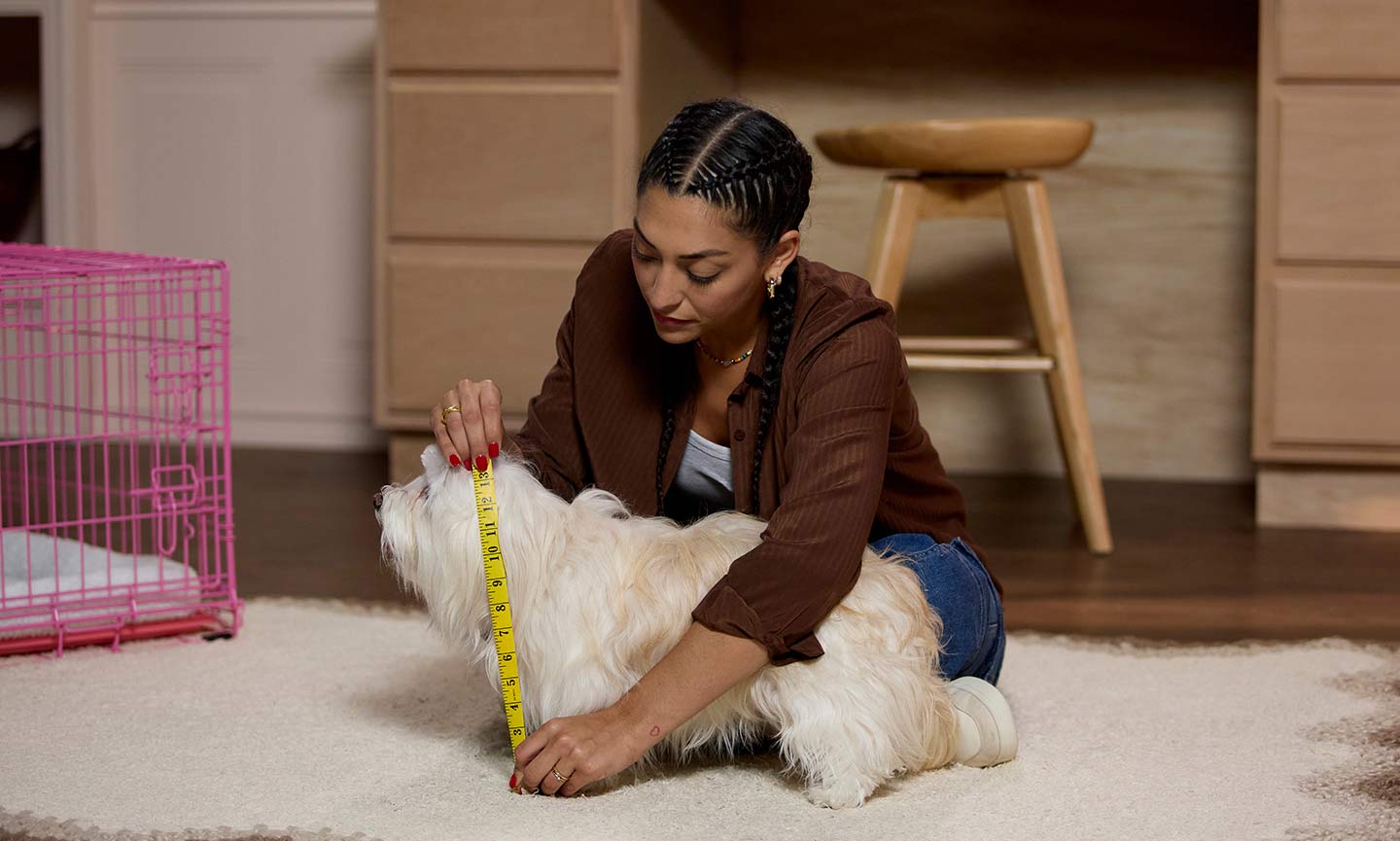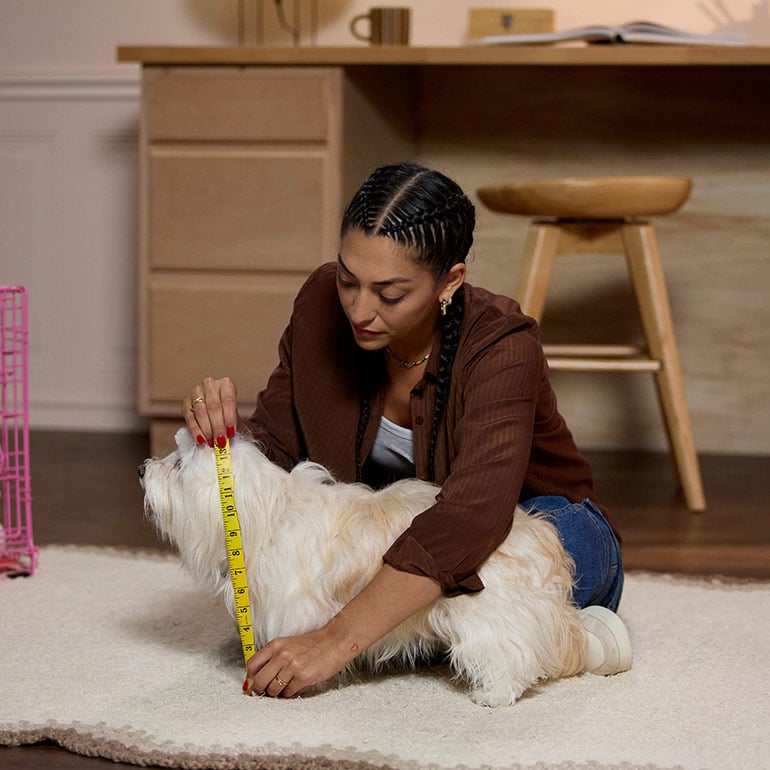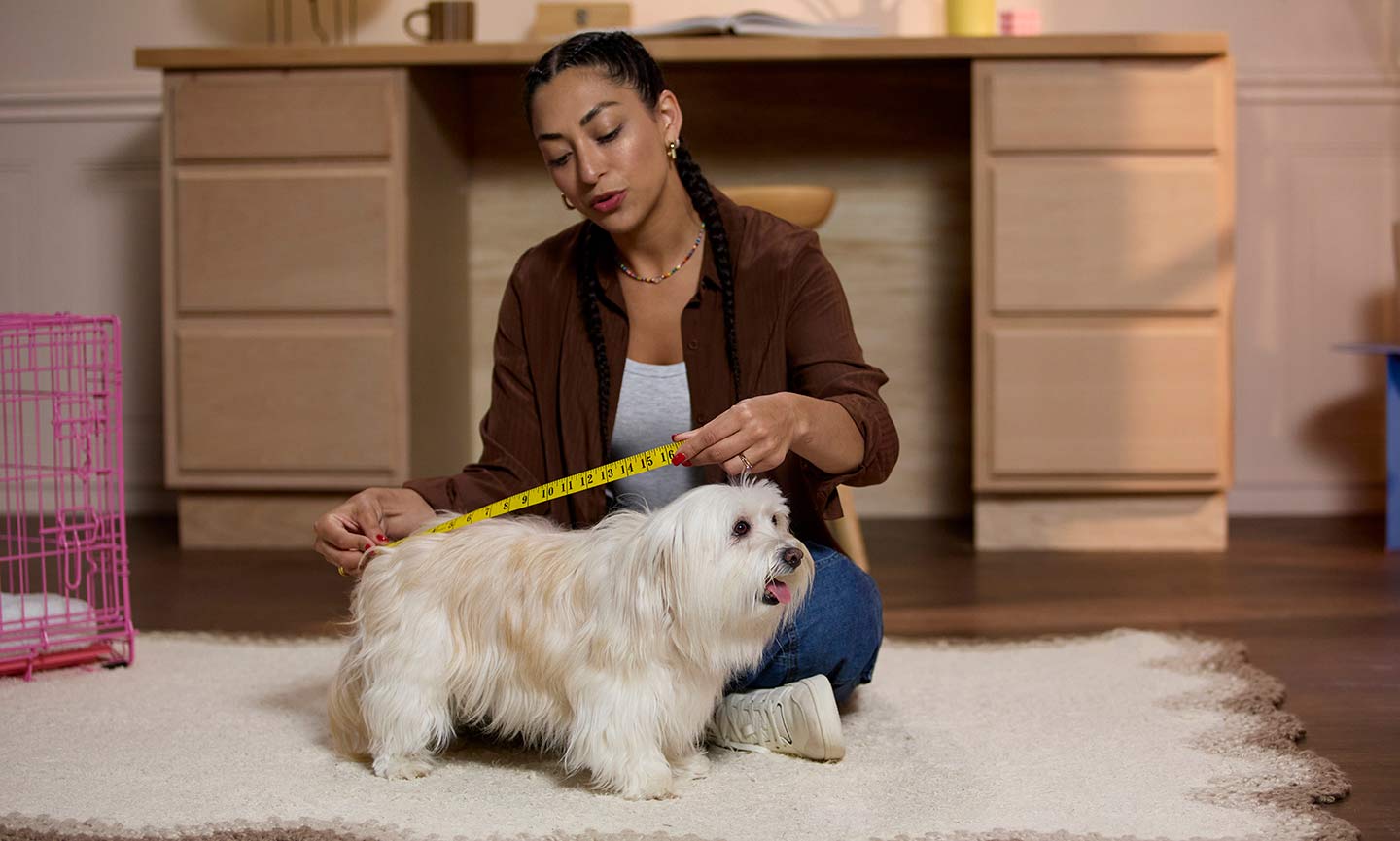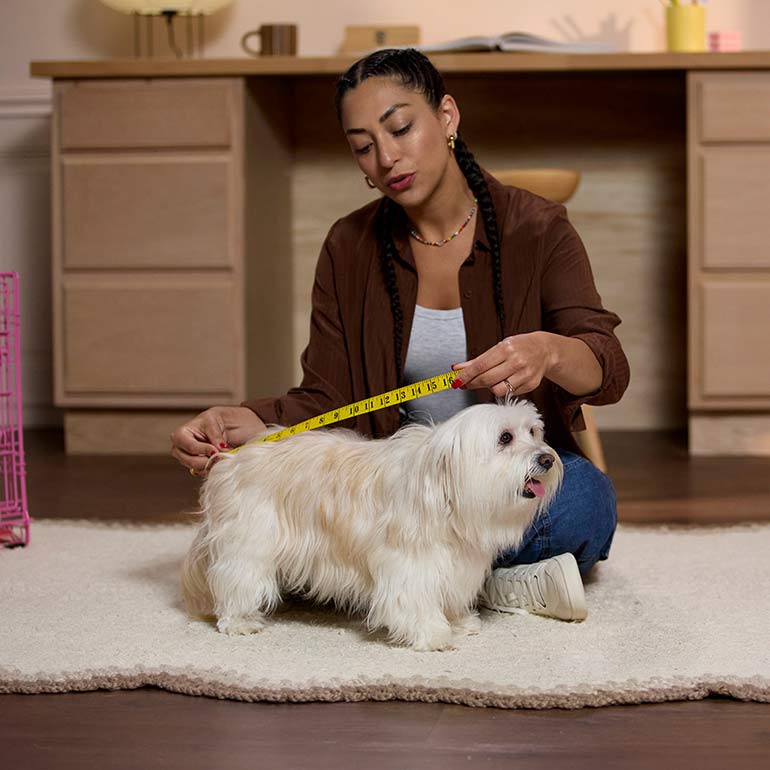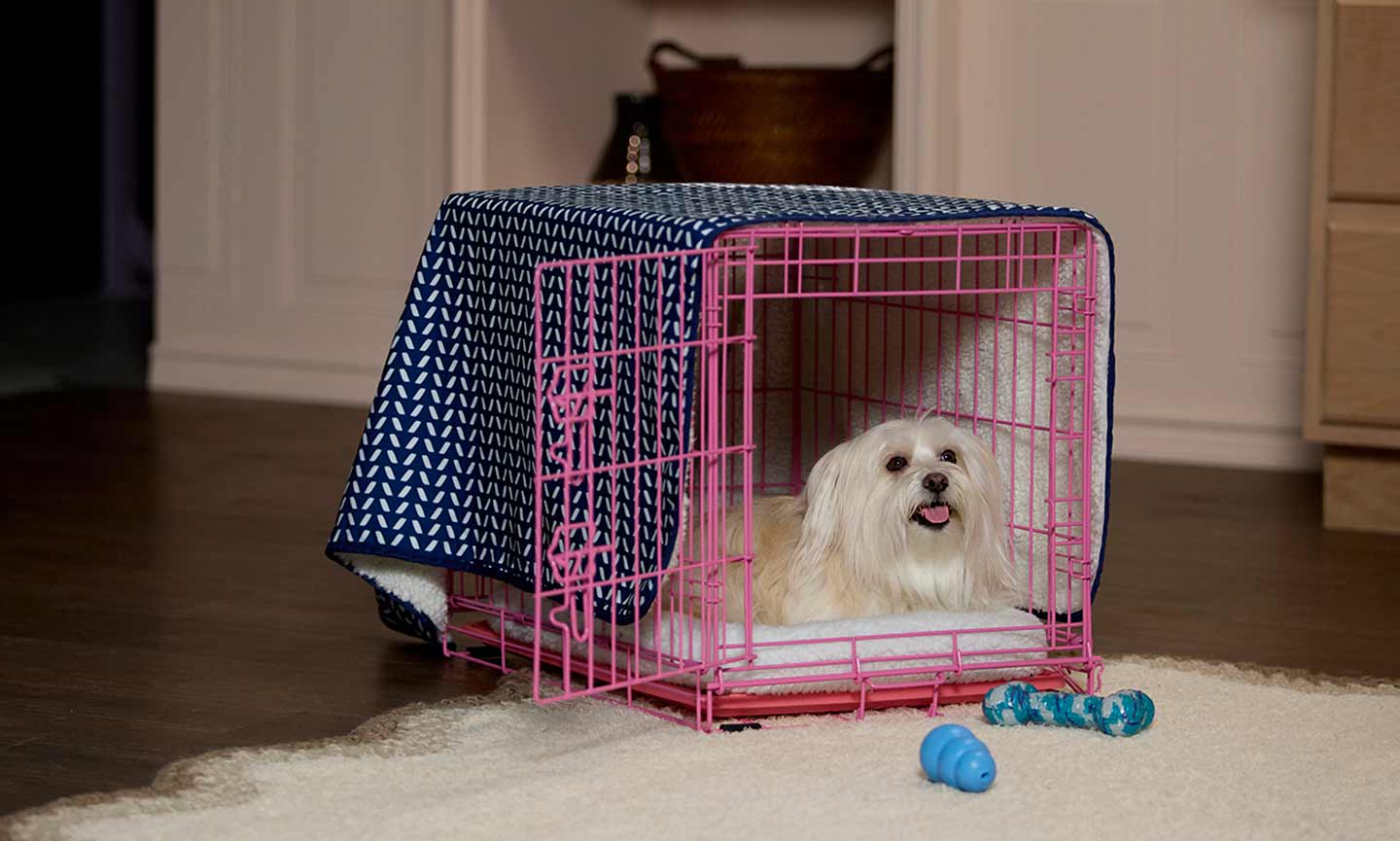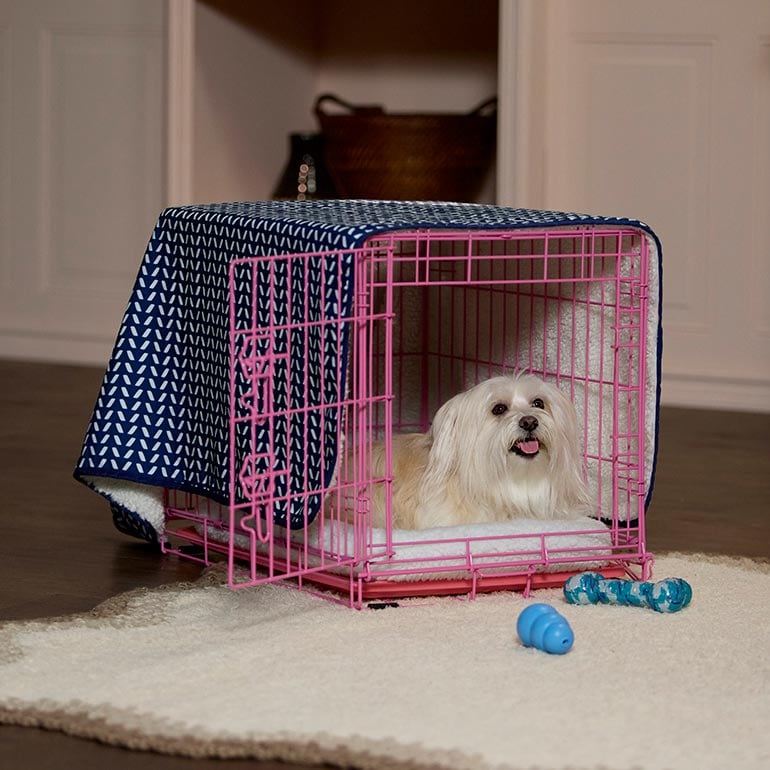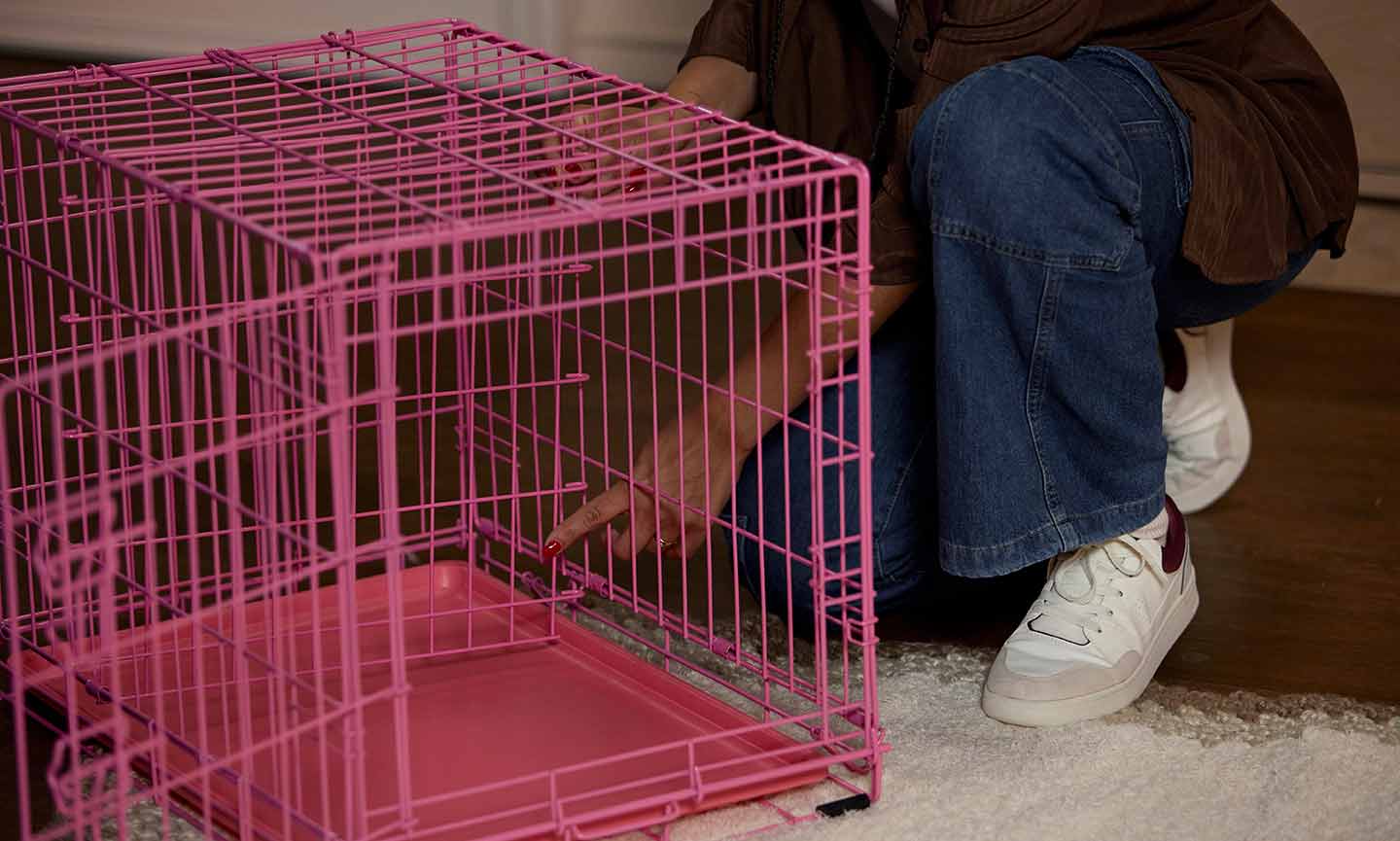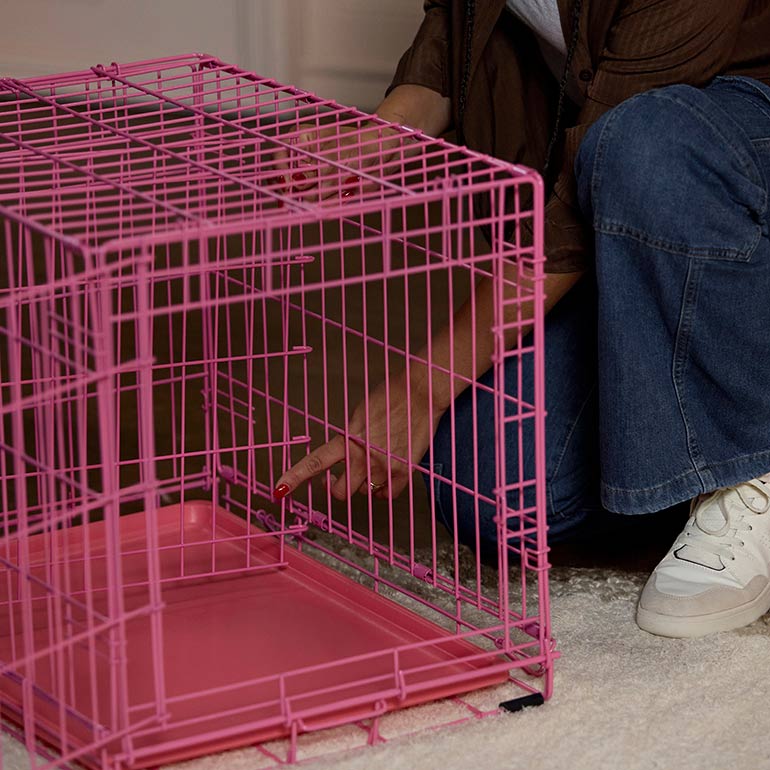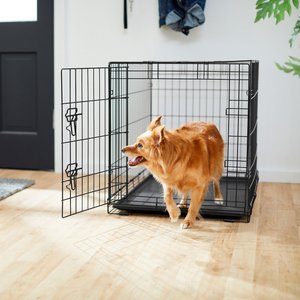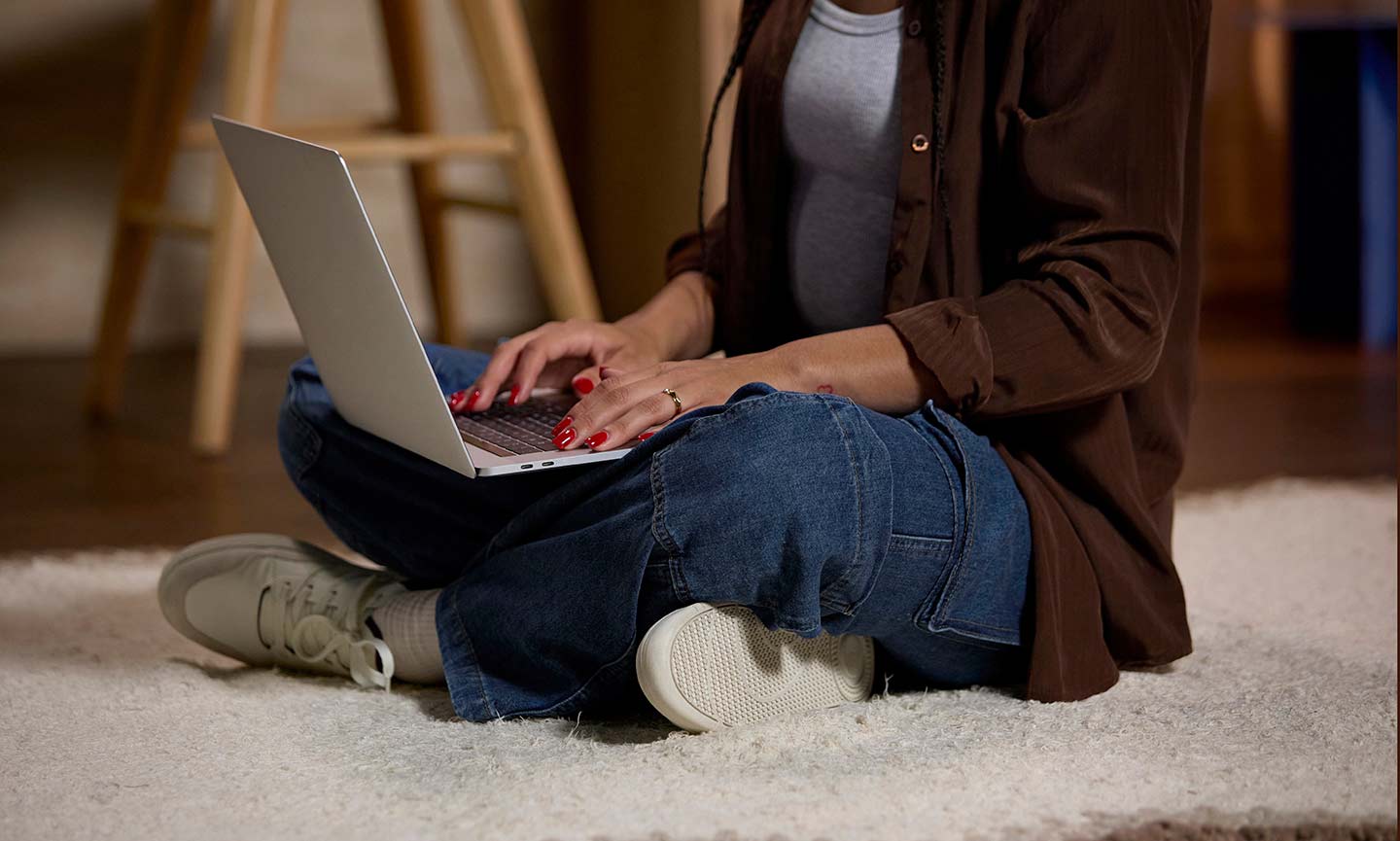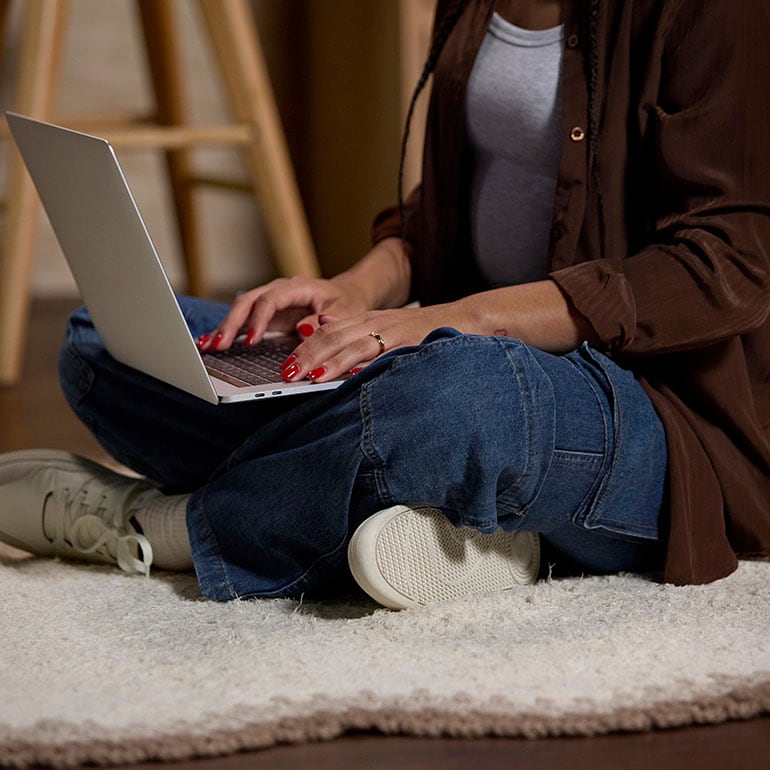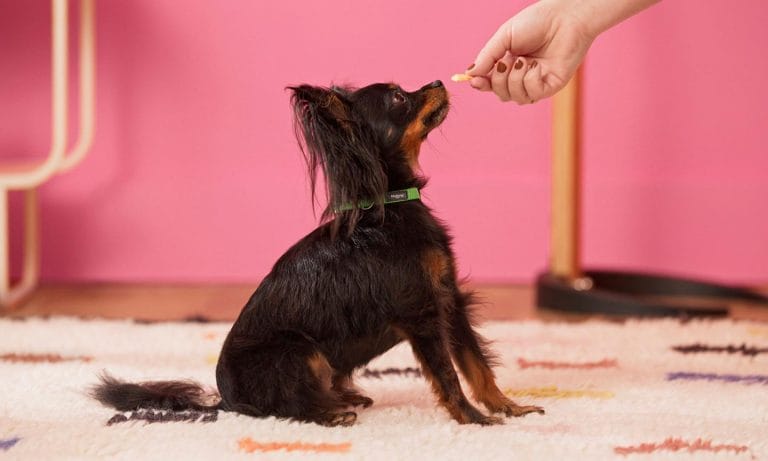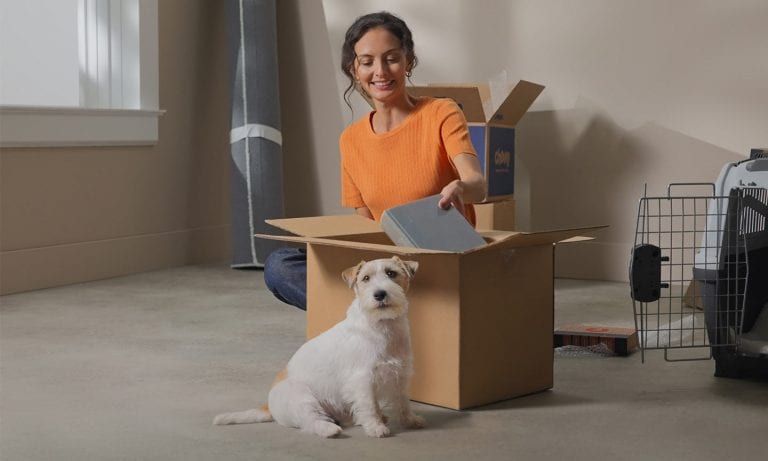A dog crate is arguably one of the most important things pet parents can buy for their dog. For starters, it’s a place for your pooch to hang out when you’re not around to keep them out of trouble or harm’s way. It also quickly becomes your dog’s safe place—a sanctuary that’s all their own. Plus, dog crates can help with aspects of potty training and other types of dog training. So, how can you tell how big (or small) your dog’s crate should be?
Ahead, we’re teaching you how to figure out what size crate for your dog is best with easy, step-by-step instructions. And to ensure your dog’s crate becomes their refuge, we’re offering tips on outfitting it so it’s cozy and inviting for your pooch.
In This Guide
Why Your Dog Crate’s Size Matters
Whether you’re the proud parent of an adult dog or new puppy, a large breed or small dog, choosing the right dog crate size is essential for their safety and comfort. It’s a bit of a Goldilocks predicament: Your dog shouldn’t have too much extra space, but they also won’t be comfortable in one that’s too small, says Bradley Phifer, a certified dog trainer and behavior consultant in Fairland, Indiana.
- Too-big crates give your pup room inside the crate to pee or poop, undermining your house-training efforts. Too much space could also allow your dog to jump around too much and injure themselves, Phifer says.
- Too-small crates will be uncomfortable for your dog, which may prevent them from wanting to spend time inside it.
How to Measure Your Dog for a Crate: Step-by-Step Instructions
1Gather Supplies
For this process, you’ll need the following:
- Your dog (of course!)
- A soft measuring tape
- Tasty dog treats
2 Measure Your Dog’s Height
Getting your dog’s height measurement for a crate is pretty simple. While they’re sitting, measure the distance from the base of one of their front paws to the top of their head. Make sure that the tape measure is pulled tight so you get an accurate measurement.
It’s helpful to write the number down or type it into your phone, so you don’t forget it and have to re-measure your dog—most pups will only tolerate being measured for so long!
3 Measure Your Dog’s Length
4 Factor in Some Wiggle Room
Make sure to add some wiggle room to these measurements to ensure your dog feels comfortable in their crate. While you don’t want them to swim in empty space, they also shouldn’t feel cramped. A good rule is to add four inches to both their height and their length measurements.
After you open and assemble your crate, you can double-check that it’s not too small by letting your dog explore it. If your pup can comfortably stand up, lay down and turn around inside of it, it’s big enough.
5 Consider Your Dog’s Growth
If your dog is still a puppy with room to grow, they may need different sizes of crates throughout their life. But that doesn’t mean you have to buy multiple crates! Many wire dog crates come with a divider panel that you can install to reduce the amount of space inside. (Dividers are less common in wooden or plastic crates.) Then, as your dog grows, you can move the panel to adjust the amount of space they have.
Not sure how tall your dog will get? Consider their breed. While every dog is unique, most dogs of a certain breed grow to roughly the same adult size. For example, here are the expected heights of a few popular dog breeds:
13-15 inches
23-27.5 inches
21.5-25 inches
21-22 inches
6-9 inches
13.5-15.5 inches
5-9 inches
11-13 inches
22-26 inches
21.5-24 inches
28-32 inches
10-15 inches
21.5-24.5 inches
7-9 inches
27.5 inches or more
6-7 inches
Standard: Over 15 inches; Miniature: 10-15 inches; Toy: no more than 10 inches
22-27 inches
9 to 10.5 inches
7-8 inches
Don’t see your breed above? We’ve got dozens more dog breed guides here.
Predicting your dog’s size can be trickier for mixed breed dogs. Talk to your veterinarian for advice.
6 Find Your Dog’s Crate Size
Types of Dog Crates
In addition to the size, consider these factors when shopping for dog crates:
- Single door vs. double door: Depending on where you place the crate in your home, you may find it useful for your dog to have multiple exits from their crate. On the other hand, if your pup is an escape artist, it might be best to stick to one way in and out.
- Crate material: Wire crates are common for dogs and often come with a divider that lets the crate grow with your pup. But you have other options too, like soft-sided crates with walls made of fabric; heavy duty crates made of sturdy metal; and wooden crates that double as end tables, blending in with your home’s decor.
Make Their Crate Feel Like Home
Once you’ve picked the perfect crate for your pooch, you’ll also want to take some time to make it feel homey. We recommend adding the following:
- Dog Toys: Include crate-friendly toys that’ll provide your pup with some mental stimulation in moments when you’re gone or when you’re asleep. Chew toys—like the KONG Classic Dog Toy—are perfect. Just be sure your dog can’t chew off any pieces of the toy while you’re not supervising them, to prevent ingesting or choking on them.
- Crate Cover: If you’re using a wire crate with open sides all around, using a crate cover can create a more den-like atmosphere for your pup. Covering the crate can help calm dogs who experience anxiety or over-stimulation. A fitted cover looks polished and still allows air to pass through so your dog doesn’t get hot. Make sure to buy the size that matches your crate.
- Personal Items: If your pet is experiencing some anxiety in their kennel, especially when you’re away, it can be helpful to include an item or two that smells like you, such as a shirt you’ve worn recently or a blanket from your bed.
More Dog Gear Tips
Share:

